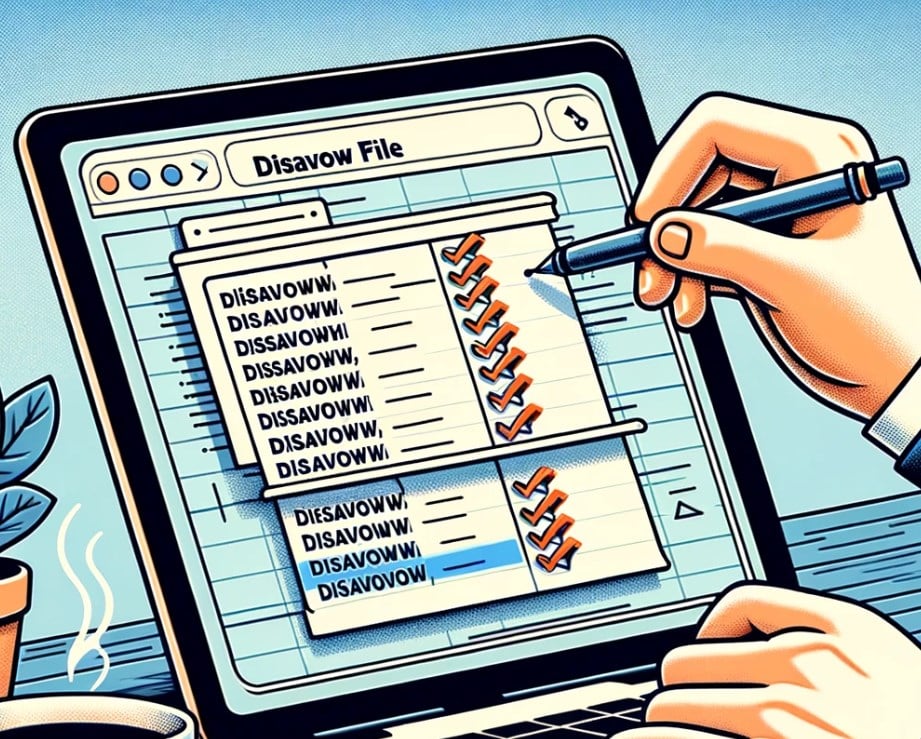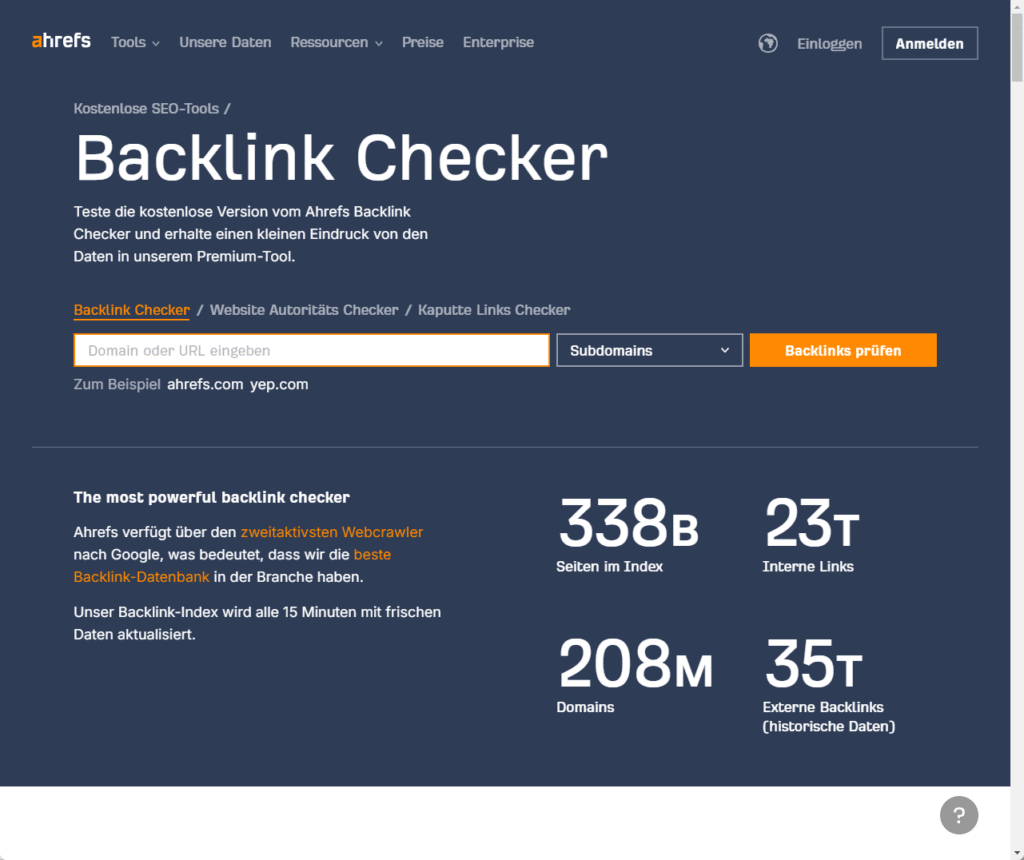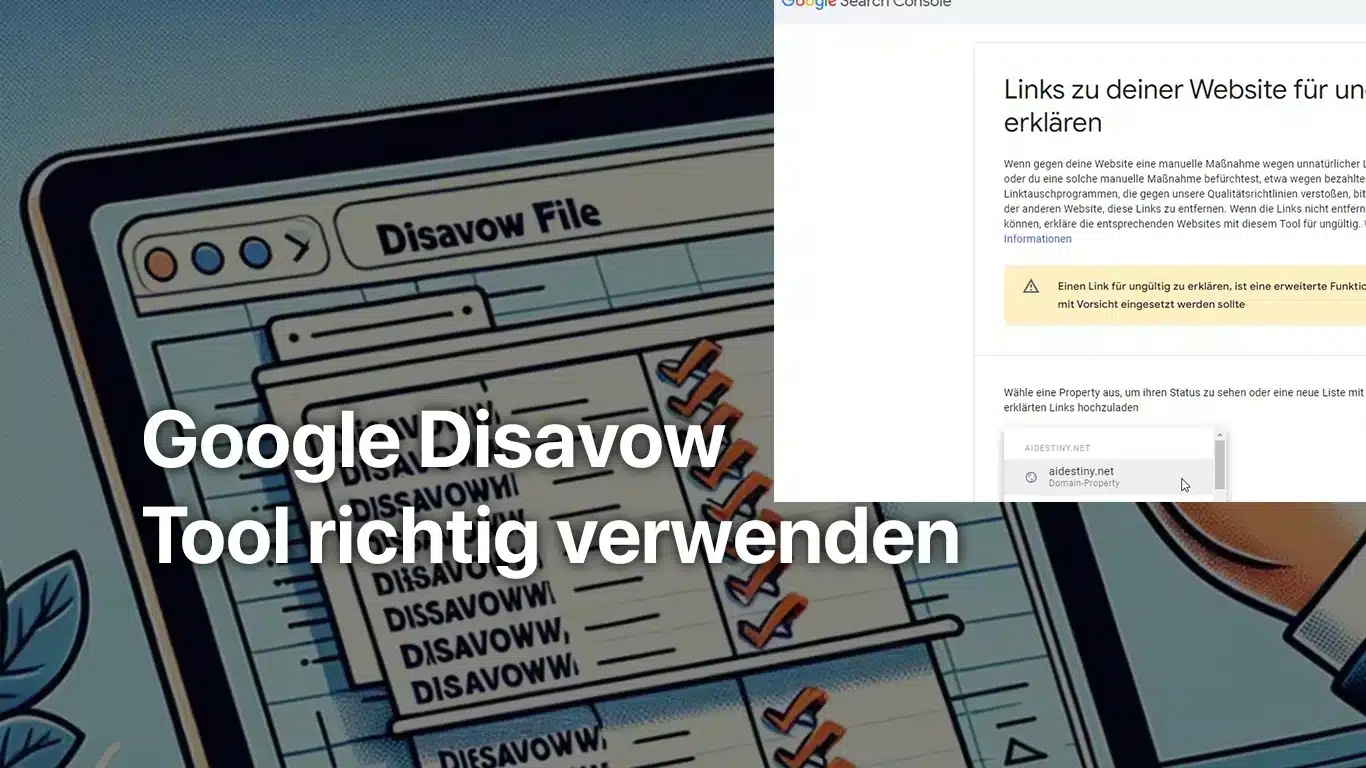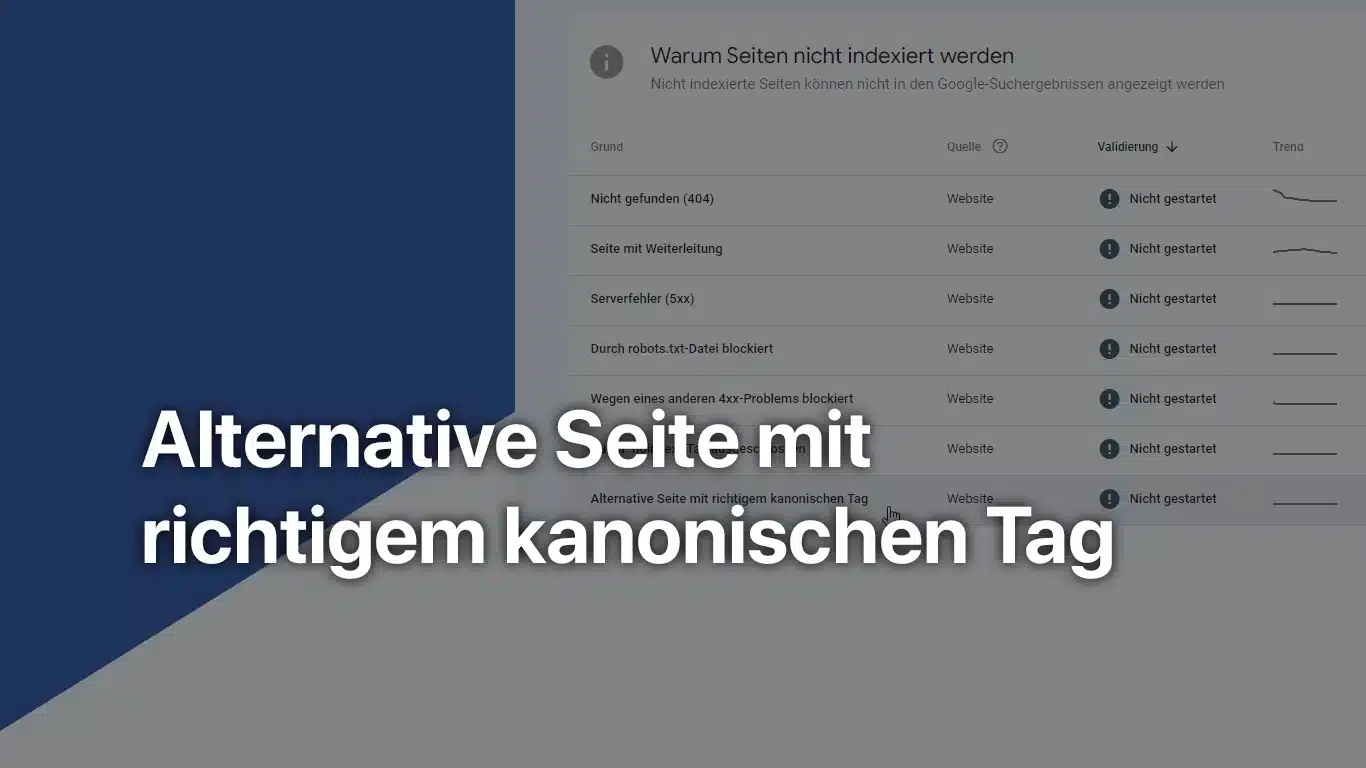Contents of the guide
Introduction: The Google Disavow Tool
A website's link profile is a factor in visibility and ranking in search engine results.
While high-quality backlinks can improve the authority and ranking of a website harmful or unnatural links do the opposite and even result in manual penalties from Google. This is where the Disavow Tool comes into play, a powerful tool provided by Google to help webmasters disavow unwanted links to their website.
The Disavow Tool allows you to tell Google which links to ignore when evaluating your website link profile.
This feature is particularly useful in situations where you have no control over the removal of the harmful backlinks, whether due to the inaccessibility of the linking webmaster or because the links are part of a negative SEO attack.
Attention: Google advises against disavowing links if you don't have to
The decision to use the Disavow Tool should not be taken lightly. Google itself points out that the tool should be used with caution, as improper use can have a negative impact on the ranking of your website. Therefore, you should first carry out a thorough analysis of your link profile and only declare invalid those links that actually pose a potential risk.
What this guide is about
In this comprehensive guide, we will go into detail about the process of identifying harmful backlinks, preparing and submitting the disavow file, and the subsequent steps.
The aim is to give you a clear understanding of how to effectively use the Disavow Tool to clean up your website's link profile.
How do you recognize harmful backlinks?

Detecting harmful/unnatural backlinks is a critical step in the process of cleaning up your link profile. Not all backlinks are created equal; some can do significantly more harm than good to your website.
Google itself has made it clearThat links that attempt to influence a site's ranking in search results through deceptive or manipulative tactics violate the Webmaster Guidelines. You can read more about it here.
Use Google Search Console

The Google Search Console is an indispensable tool for every webmaster. It provides a comprehensive insight into your website, including the links pointing to it. Under the "Links" section, you can see which websites link to your pages. Look for unusual patterns, such as sudden spikes in the number of backlinks or links from websites that are not thematically related to your niche.
Use analysis tools for backlinks

In addition to Google Search Console, there are specialized tools such as Ahrefs, SEMrush or Majestic that provide deeper insights into your backlink profile. These tools can help you identify potentially harmful links by ranking them according to risk factors. They often also provide additional information about the linking domains, such as domain authority and the context of the links.
Tip: The SEO tool 'SEMRush' offers a function to check the quality of backlinks and even to declare these links invalid.
Manual verification
While tools are helpful, they do not replace the need for manual review. Take the time to take a closer look at suspicious links. Check whether the linking pages fit the topic of your website and whether the context of the link seems natural. Links from websites that are known for spreading spam or that are involved in fraudulent activity should be red flags.
Consider the anchor texts
The anchor text used to link to your website can also indicate the quality of the backlink. Over-optimized anchor texts that match exact keywords, especially when they appear in large numbers, can indicate unnatural link building practices.
You can identify harmful backlinks and take steps to clean your link profile.
Preparation of the disavow file

Now that we’ve covered how to detect harmful backlinks, here’s the next step preparing the disavow file.
This process is crucial to effectively telling Google which links you want to exclude from evaluating your link profile.
Step 1: Collect all backlinks
Start by compiling a comprehensive list of all backlinks pointing to your website using Google Search Console and external tools such as Ahrefs, SEMrush or Majestic. This combination will give you a complete view of your current backlink profile.
Step 2: Identify malicious links
After collecting your backlinks, you can identify the malicious or unnatural links that you want to report using the disavow file. The criteria for this should be low quality links, spam websites or pages that violate Google's Webmaster Guidelines. Use your insights from the previous section to identify these links.
Step 3: Create the disavow file
After identifying the malicious links, create a .txt file containing these links. Each line of the file should contain either an instruction to ignore a specific link or an entire domain. Format the file as follows:
- To disavow a single URL, enter the URL on one line.
- To disavow all links from an entire domain, add “domain:” followed by the domain address.
Step 4: Add comments
It is helpful to add comments to your disavow file to document your decisions. This can be useful for internal purposes, but note that Google will ignore these comments. Comments are preceded by "#".
After your disavow file is complete, submit it via the disavow tool:
Navigate to the tool, select your website and upload your file.
Please note that it may take a few weeks for Google to process the file and exclude the links from your link profile.
Warning: This tool is a tool that should be used with great care and only as a last resort.
Incorrect use can negatively impact your ranking.
[cp_popup display=“inline“ style_id=“10740″ step_id = “1”][/cp_popup]
Submitting to Google (+ Best Practices)

After your disavow file is complete, submit it via the disavow tool:
Find the tool here, select your website and upload your file.
Please note that it may take a few weeks for Google to process the file and exclude the links from your link profile.
Warning: This tool is a tool that should be used with great care and only as a last resort.
Incorrect use can negatively impact your ranking.
- Access to the Disavow Tool: Click here to access the Disavow Tool. Select the website you want to submit the disavow file for.
- Upload file: Click the upload button and select your .txt disavow file. Make sure the file is in the correct format and contains all the URLs or domains you want to disavow.
- Confirm submission: After selecting the file, click Submit. Google will show you a confirmation that your file was successfully submitted.
Submission best practices
- Use carefully: Only use the Disavow Tool when absolutely necessary.
- Periodic review: Check your link profile regularly for new malicious backlinks and update your disavow file accordingly.
- documentation: Keep a copy of your disavow file and any changes. This makes future updates easier and allows you to adjust your SEO strategy.
- patience: Please note that it may take some time for Google to process the disavow file and exclude the links from evaluating your link profile. Wait a few weeks and then monitor the impact on your rankings and link profile.
Frequently asked questions
What is Google Disavow?
The Google Disavow Tool is an important tool provided by Google to help webmasters tell Google which backlinks to their website's link profile should be ignored.
This is particularly useful when there are malicious or unnatural links that could negatively impact rankings.
When should I use the tool?
The tool should be used with caution and only in cases where you have identified harmful backlinks that you cannot remove and that pose a potential risk to your website ranking. Google recommends using the tool as a last resort.
How do I recognize harmful backlinks?
Malicious backlinks can be identified by analyzing your link profile using Google Search Console and external tools such as Ahrefs, SEMrush or Majestic. Watch out for low-quality links, spam sites, or pages that violate Google's Webmaster Guidelines.
Are there any tips for using the tool?
Yes, use the tool carefully and only when necessary. Review your link profile regularly, keep documentation of your disavow file, and be patient as Google may take time to process it.
Can using the disavow tool affect my ranking?
Improper use of the tool can negatively impact your ranking, so it is important to only use the tool for links that actually pose a risk and that you cannot remove.
How long does it take for changes to take effect?
It may take a few weeks for Google to process your disavow file and exclude the disavowed links from evaluating your link profile. Monitor your ranking and link profile to monitor the impact.
How do I build good backlinks?
We have written comprehensive instructions for this: Backlink Building: Comprehensive step-by-step instructions
Do you have any questions or suggestions? Feel free to leave a comment.
Do you want to build a good backlink profile? Check out our guide.






Can you be more specific about the content of your article? After reading it, I still have some doubts. Hope you can help me.